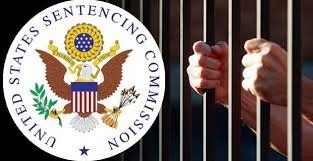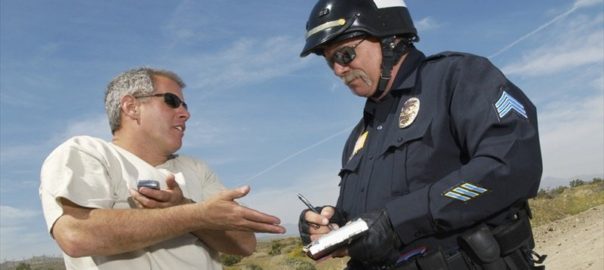Biometric Features are Testimonial in Nature and are Protected Statements Under the Fifth Amendment
In the Matter of the SEARCH OF A RESIDENCE IN OAKLAND, CALIFORNIA
United States District Court, Northern District of California
Case No. 4-19-70053
Author’s Note: A Federal Court in the Northern District of California has held that the police may not force a suspect to provide biometric features when they want to unlock an electronic device because those biometric features are testimonial and protected by the Fifth Amendment. Biometric features are typically fingerprints, iris scans or facial scans. Although this case comes from a trial court, which I don’t normally blog on, I thought the holding was interesting. Even more interesting will be the appeal to the Ninth Circuit and how it will hold up compared to Schmerber v. California, 384 U.S. 757 (1966) and its progeny.
Decided on January 10th, 2019
Federal Criminal Appeals in the Ninth Circuit Court of Appeals
Federal Criminal Appeals in California
ISSUE:
Whether the Police may compel the use of biometric features, such as finger prints, facial or iris recognition, to open electronic devices such as cell phones and whether such police activity results in self-incriminating testimonial communication in violation of the Fifth Amendment where the government sought the authority to compel individuals to provide any biometric feature necessary to unlock a digital device.
HOLDING:
The Court held that biometric features, including finger prints, facial or iris recognition, are testimonial in nature and are, therefore, protected by the Fifth Amendment. The use of a suspect’s biometric feature to unlock an electronic device violates the Fifth Amendment right against self-incrimination because biometric features serve the same purpose of a password, and a person cannot be compelled to provide a passcode because it is a testimonial communication and, therefore, protected by the Fifth Amendment.
FACTS OF THE CASE:
In the investigation of two individuals believed to be involved in extortion, the Government submitted an application to the United States District Court for the Northern District of California for a search warrant to seize several items connected to the two suspects; amongst the items were electronic devices such as mobile phones and computers. The Government sought the authority to compel any individual present at the time of search to utilize biometric features, such as fingerprinting or facial or iris recognition, for the purpose of unlocking the digital devices found in order to permit a search of the contents.
COURT’S ANALYSIS:
The Court held that biometric features, including finger prints, facial or iris recognition, are testimonial in nature and are therefore protected by the Fifth Amendment. The use of a suspect’s biometric feature to unlock an electronic device violates the Fifth Amendment’s right against self-incrimination. The Fifth Amendment provides that no person “shall be compelled in any criminal case to be a witness against himself.” U.S. Const. amend. V. While the Fifth Amendment does not specifically mention biometric features or digital devices, it is the duty of all Courts to safeguard Constitutional rights despite the advancement of technology. To assume that citizens anticipate a waiver of their civil rights when using new technology is to leave them at the mercy of the ever-advancing technology.
In Doe v. United States, 487 U.S. 201, 291 (1988) it was held that a passcode cannot be compelled under the Fifth Amendment because the act of communicating the passcode is testimonial and expressing the contents of one’s mind falls directly within the protection of the Fifth Amendment. Testimony is not limited to verbal or written communication. An act that implies assertion of fact can constitute testimonial communication for the purposes of the Fifth Amendment, particularly a witness’s act of producing something could qualify as testimonial if conceding the existence, possession and control, and authenticity of the documents tended to incriminate them. Certain acts, while incriminating, do not fall within the privilege. For example, furnishing a blood sample, submitting to fingerprinting, providing a handwriting or voice exemplar, or standing in a lineup. There is a disparity between compulsion of communications or testimony, which violates the Fifth Amendment, and compulsion which makes a suspect or accused the source of real or physical evidence, which does not.
The Court Makes Two Major Distinctions Between Using Biometric Features to Unlock an Electronic Device and Submitting to Fingerprinting or a DNA Swab
One: Biometric features serve the same purpose of a passcode; they are used interchangeably, and both serve the purpose of securing the owner’s content. The Court used the example of restarting a phone or keeping it locked for too long; in those cases, the phone may not accept any biometric feature at all and force the user to enter the passcode. This is done to add an additional layer of security against someone who does not have the passcode. The Government placed a sense of urgency on compelling individuals to provide biometric features as a means of bypassing their inability to compel the production of a passcode. However, if a person cannot be compelled to provide a passcode because it is testimonial communication, a person cannot be compelled to provide one’s fingerprint, thumb, iris, face or other biometric feature to unlock the same device.
Two: Requiring someone to place their finger or thumb to a digital device is fundamentally different than requiring a suspect to submit to fingerprinting. When a person uses their finger or thumb to unlock a device, they are asserting that the device belongs to them. By doing so, they assert that they are in the possession and control of the device with ownership or access to the phone and all of its digital contents are verified. The act of unlocking a phone with a finger or thumbprint scan far exceeds the physical evidence created when a suspect submits to fingerprinting to compare his fingerprints to existing physical evidence found at a crime scene because there is no comparison or witness for the former. A finger or thumb scan either confirms or denies the ownership or control of a device and, unlike fingerprinting, the authenticity cannot be reasonably disputed.
The Court held that the foregone conclusion doctrine does not apply here. The foregone conclusion doctrine is an application of the Fifth Amendment by which the Government can show that no testimony is at issue. It is used when the witness adds little or nothing to the sum total of the Government’s information by conceding that he in fact has the documents. It does not apply when the Government cannot show prior knowledge of the existence or the whereabouts of the documents ultimately produced in response to a subpoena. Advanced mobile phones are entitled to greater privacy protection because they contain not only a digital form of many sensitive records that can be found in a search of a home but also a broad array of private information never found in a home in any form in the absence of the phone. Therefore, mobile phones are subject to different treatment than more traditional storage devices, like safes, and should be awarded more protection.



